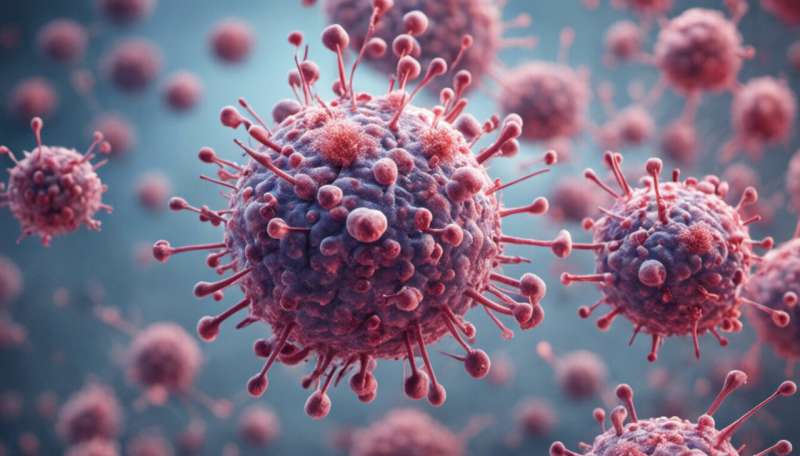Researchers connect diseases based on their molecular similarities

Northeastern University network scientists have found a way to connect diseases based on their shared molecular interactions. Published in the journal Science, the Northeastern team created a mathematical tool to analyze the human interactome—a map of the molecular interactions within cells—and found that overlapping disease modules—neighborhoods of disease-associated proteins—result in sometimes unexpected relationships between diseases.
The findings constitute a remarkable step in understanding human diseases. "It is increasingly obvious that human diseases can be interpreted only in the context of the intricate molecular network between the cell's components," said Albert-László Barabási, Robert Gray Dodge Professor of Network Science and University Distinguished Professor and director of Northeastern's Center for Complex Network Research. "What was not obvious until now is whether the available network maps offer enough coverage and accuracy to help us get started in this path. In this paper we showed that they do offer that accuracy and provide valuable information about the molecular origins of disease-disease relationships."
The team analyzed 299 diseases that had at least 20 associated genes and found that 226 of the diseases had their own specific "neighborhood" within the interactome. They also discovered that diseases that were far away from each other within the interactome had very little in common in terms of molecular functions or symptoms, while ones in the same "neighborhood" were more similar.
Shared genes offer only limited information about the relationship between two diseases. By applying their network science tools to analyze the interactome, Barabasi and his team found that two seemingly unrelated diseases can actually be connected based on the network distance between the disease modules. For example, they found that asthma, a respiratory disease, and celiac disease, an autoimmune disease of the small intestine, are localized in overlapping neighborhoods suggesting shared molecular roots despite their rather different pathobiologies.
"What we try to achieve in this paper is to lay out a more mathematical groundwork for this intuitive idea that you can use the interactome as a map," said Jörg Menche, a postodoctoral researcher and one of the authors on the paper. "It could play a major role in understanding diseases on a molecular leveland developing better remedies."
Menche offered an example of the power of the network map, explaining that doctors typically diagnose patients based on symptoms described by the patient. But using the network map, he said, could make it possible to find out what is happening in the gene product interactions to cause the particular ailment.
"Despite impressive advances in interactome mapping and disease gene identification, both the interactome and our knowledge of disease-associated genes are still woefully incomplete. This incompleteness prompted us to systematically investigate to what extent the current data are sufficient to map out disease modules," added Mensche.
"In conclusion," he said "we could show that the currently available interactome data has reached sufficient coverage to systematically investigate the molecular mechanisms underlying many diseases, as well as to explore pathobiological relationships between diseases on a molecular level."
More information: "Uncovering disease-disease relationships through the incomplete interactome." Science 20 February 2015: Vol. 347 no. 6224 DOI: 10.1126/science.1257601
















